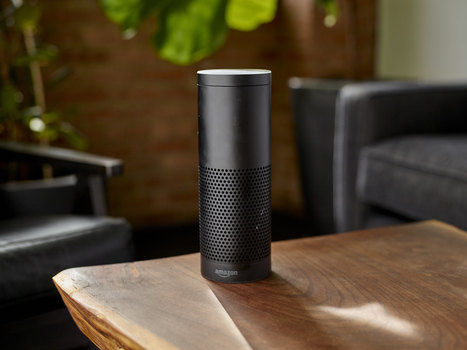Almost all American adults have a voice search tool with them at all waking hours. You probably have one on your person right now. For iPhone users, it’s Siri, which also is on the MacBook and iPad. For Samsung users, it’s Google Now. Last year, people completed 250 billion searches with their voices. That’s one in eight searches.
There’s no question the demand for voice search is growing significantly. But how can you ensure you take advantage of it? Here are ways to capitalize on the trend line.
Start by developing your SEO
The most common response from voice assistants is to connect a user to Google’s top results. For example, when you ask a device a specific question like, “What is Tom Steyer’s position on the economy?” it will often direct you to five results in a mobile web browser.
Therefore, ensuring your campaign ranks at the top of Google has never been more important.
Use Schema.org
Voice assistants increasingly use microdata from Schema.org to surface results. So, make sure your pages have metadata from that site inputted.
Get Off Twitter, and instead build for Google
Campaigns and consultants spend so much time on Twitter. But it’s worth remembering, just 22 percent of American adults are on Twitter. Meanwhile, 73 percent of them are on YouTube (the world’s second-biggest search engine).
It’s a habit and a mindset change, but spending less time on Twitter and more time on Google/YouTube, will pay huge dividends for campaigns who can prove they are disciplined.
Create an extended FAQ
What is the primary input of voice assistants? Questions.
Use AnswerThePublic.com to produce a tree of all of the questions people are asking. You should have a page on your website that answers all of those questions and more. Then use the above-mentioned Schema.org to create microdata for the page that will help voice assistants populate the information to voice searchers.
Build an Alexa skill
An Amazon Alexa skill is a voice application. Similar to how Apple has apps on its App Store, Amazon has apps that work on the Alexa and can be created by anyone. Alexa represents the potential for what voice technology, especially for campaigns holds.
On a recent trip to Seattle, I met with two Amazon Alexa staff members. They explained to me that practitioners in voice should focus on building for two distinct purposes. The first is consumer voice experiences. These are voice applications that answer questions or provide information for commands.
The second purpose is conversational AI. These are advanced applications that make you feel like you are having a conversation with a person.
Develop CFIRs for your Alexa skill
CFIR stands for Can Fulfill Intent Requests. CFIRs populate Amazon Alexa’s database with information and are like keywords or key phrases that may invoke your skill.
Example: I was laying on my couch one day and feeling tired. So, I said, “Alexa, inspire me.” And a skill started playing and offering me inspirational quotes from Oprah, Muhammed Ali and other leaders. The creator of this skill had programmed “inspire me” as a CFIR.
These are similar to the questions and answers you put on your FAQ as well as commands and responses you want that users could invoke.
Publish keyword-rich videos on YouTube
Remember, YouTube is the world’s second-biggest search engine. Start supplying content for it. Publish answers to FAQs in video form. Publish campaign ads. And in your keywords, post the questions that voice searchers might ask their assistants. Google pulls heavily from YouTube for results, and this may cause your content to rank near the top.
Embrace brevity
Similar to people, voice assistants that talk too much and for too long can be annoying. Keep your answers brief — 29 words brief. Those 29 words are about 10 to 12 seconds. Meanwhile, make your questions a bit longer — about 9 words, as this is the average length of questions people ask their voice assistants.
So don’t get left behind. Follow these tips to optimize your campaign for voice!



 Your new post is loading...
Your new post is loading...







